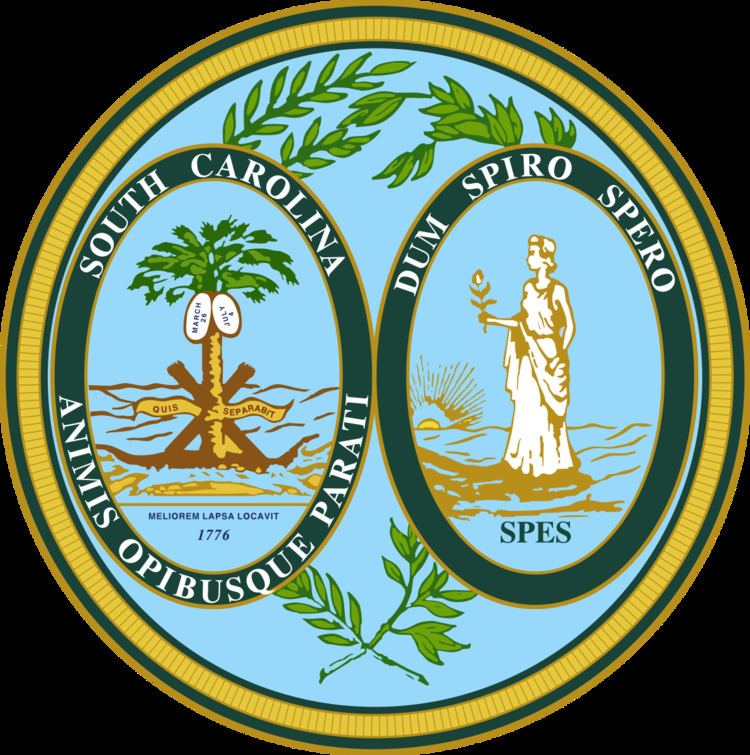Adopted 1776 | ||
 | ||
Motto Quis separabit?Meliorem Lapsa LocavitAnimis Opibusque ParatiDum Spiro SperoSpes | ||
The Great Seal of the State of South Carolina was adopted in 1776. The seal is made up of two elliptical areas, linked by branches of the palmetto tree. The image on the left is dominated by a tall palmetto tree and an oak tree, fallen and broken. This scene represents the battle fought on June 28, 1776, between defenders of the unfinished fort on Sullivan's Island, and the British Fleet. The standing palmetto represents the victorious defenders, and the fallen oak is the British Fleet. Banded together on the palmetto with the motto "Quis separabit?" ("Who Will Separate [Us]?"), are 12 spears that represent the first 12 states of the Union. Surrounding the image, at the top, is "South Carolina", and below, is "Animis Opibusque Parati" ("Prepared in Mind and Resources"). The other image on the seal depicts the Roman Goddess Spes walking along a shore that is littered with weapons. The Goddess, symbolizing Hope, grasps a branch of laurel as the sun rises behind her. Below her image is her name "Spes", Latin for "Hope", and over the image is the motto "Dum Spiro Spero", or "While I Breathe I Hope".
The Great Seal of South Carolina was "set" or "affixed" to the Ordinance of Secession of December 20, 1860, at Secession Hall in Charleston shortly after 7:00 p.m., following which convention delegates signed it, including Robert Barnwell Rhett, as some three thousand South Carolinians watched enthusiastically the proclamation of South Carolina as "a separate, independent nationality."
